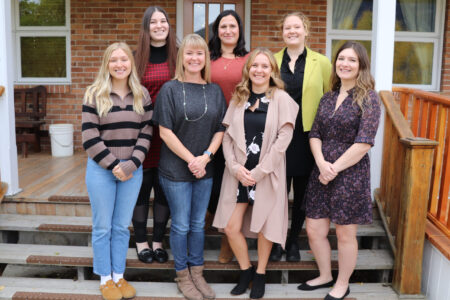Kimberley’s Diamond in the Rough
Mining and the sun link the three cities with the same name — Kimberley — in British Columbia, Australia, and South Africa.
After 92 years of active mining, producing more than $20 billion worth of lead, zinc, and silver, Kimberley, B.C.’s Sullivan Mine closed in 2001.
The Kimberley region of Western Australia accounts for all of the area’s diamond production and produces 90 per cent of the world’s pink diamonds.
In South Africa, Kimberley is the capital of Northern Cape Province and renowned for its Big Hole diamond mine. The roots of the De Beers cartel of diamond companies can be traced to the city.
The three Kimberleys are also diamonds in the rough when it comes to mining the sun.
The South African Kimberley has a brand new shiny solar plant. Droogfontein Solar Power farm is located 20 km outside the city and will generate 85,458 MWh per year, enough to meet the annual electrical energy needs of more than 19,000 average homes. It is one of the first solar power projects in the country and began commercial operation in April 2014.
In Australia, Low Carbon Kimberley is a social enterprise seeking to develop community owned solar energy projects, promote energy efficiency and support indigenous employment & community capacity building.
The Kimberley region – covering 320,000 sq. km., three times the size of England – is one of the sunniest in the world, making solar power a wise financial investment. Yet many of its 30,000 residents are paying as much as $11,000 per year for energy, dependent on expensive diesel fuel which must be trucked to this most sparsely populated area. A few solar farms have been built but many remain on the drawing board.
Now Kimberley, B.C., is getting in on the solar action and – appropriately enough – their project is called SunMine and is situated on 5 hectares of reclaimed industrial land on the former Sullivan concentrator mine site.
Biggest solar farm west of Ontario
The $5.3 million SunMine will have over 4,000 solar-cell modules, mounted on 96 solar trackers which follow the sun’s movement, maximizing solar exposure. When completed it will be the first large ground-mounted, grid-connected PV plant in Western Canadaand will sell power to BC Hydro.
This 1.05 Mega Watt Peak (MWp) project is intended to provide a platform that can be expanded to up to 200 MWp in the future. Initially, SunMine will generate enough power for about 200 homes.
SunMine will be owned and operated by the City of Kimberley whose citizens voted overwhelmingly in a 2011 referendum to support borrowing $2 million for the resort municipality’s solar project.
“Kimberley citizens directly endorsed this project and we’re proud to deliver on a bold and innovative initiative,” says Kimberley’s Mayor, Ron McRae.
“This project aligns with the community’s values associated with environment, community and a history of innovation and resilience. We’re creating the future, not awaiting it, and this project shows we mean business.”
Teck supports SunMine financially
The project is supported by Teck Resources Ltd., whose involvement, first announced in 2011, includes providing land and site infrastructure as well as a $2 million contribution. Teck formerly operated the Sullivan Mine under the name Cominco.
“SunMine is an innovative use of a former mine site and is an excellent example of a collaborative partnership supporting sustainable, vibrant communities,” said Mark Edwards, Vice President, Community and Government Relations, Teck.
“Our interest in SunMine also reflects Teck’s commitment to alternative sources of energy.”
When Cominco closed the Sullivan Mine, it left the high voltage power lines that powered it. The fact these power lines and a substation are in place reduces costs tremendously – and the ridge is high enough that it gets a lot of direct sunlight.
The modules will also get solar bounce from snow in winter, the rays bouncing from the ground, adding to the amount of electricity produced.
B.C. Energy Minister Bill Bennett says the project is about proving the viability of solar power and investigating how to keep costs down. Ultimately, he hopes the project will be an inspiration to other communities.
“I think when the project is up and running, if it’s as successful as it looks like it’s going to be – the most successful solar project in the country is what we’re hoping – I think it will spur a lot of interest in developing other solar projects around the province,” Bennett told the CBC.
Project spearheaded by Vancouver non-profit to prove solar potential
The B.C. government’s Innovative Clean Energy (ICE) Fundprogram will provide $1 million for SunMine through the EcoSmart Foundation, a Vancouver based non-profit foundation promoting economically and ecologically smart projects between public and private sectors. EcoSmarthas been a driving force that helped incubate the project from concept to reality.
The project also received funding support from the Columbia Basin Trust and the Southern Interior Development Initiative Trust.
Kimberley’s history has been shaped by people with big ideas and an aversion to the word “no”.
Located in Southeastern BC, Kimberley’s story begins with the discovery of Galena at the North Star Mine – now the location of the popular Kimberley Alpine Resort.
A year later four prospectors discovered what would become the largest lead and zinc mine in the world for much of the 20th century.
The Sullivan Mine fuelled the growth of Kimberley and what would later become the Consolidated Mining and Smelting Company (Cominco), and later Teck-Cominco.
In 1968, the community recognized that its mineral resources would eventually be depleted, and began to focus on developing recreational resources to attract visitors.
In 1973, a Bavarian theme was adopted and the transition from mining to tourism and recreation destination began.
Since that time the community has supported various social entrepreneurship ventures to facilitate economic diversification, including ownership and management of the ski hill; the commissioning and construction of several championship golf courses and an award-winning campground.
Later the ski hill was packaged with a golf course for sale to the private sector; and in 2010 the Kimberley Conference and Athlete Training Centre was constructed as a further draw for visitors.
Project aligns with city’s sustainability plan
The Sun Mine project aligns with the city’s recently completed Imagine Kimberley Community Sustainability Plan, which, among many other objectives, encourages a move toward meeting more of the community’s energy needs by use of renewable energy sources and toward a more adaptable and resilient economy based on efficient technologies, sustainable resources and innovative industries.
The Sun Mine initiative demonstrates leadership and commitment toward a more sustainable future for Kimberley.
Conergy Canada is the prime contractor to providing SunMine’s engineering, procurement, and construction management. The project will use Conergy PV modules, ABB- Power-One distributed inverters and DEGER dual axis-tracker.
Conergy President Jared Donald says the solar farm may seem small, but it’s not a token effort.
“When we look at energy or solar globally this is not a project significant in terms of its scale,” said Donald.
“But there are a lot of aspects about this project that are highly differentiated that will really put it on the map. It will serve as a proof-of-concept of what solar can do in the province.”
Construction at SunMine began in July and will continue through the fall with a target date for operation in January 2015.
According to sunshine data collected at the province’s weather stations, the East Kootenay has long been near the top of the list of potential solar locations.
Now Kimberley, B.C. – a former mining town – will get its chance to prove communities can mine the sun.
Michael Jessen is a Nelson-based energy consultant and has written about environmental issues for more than two decades. He can be reached by email at zerowaste@shaw.ca

























